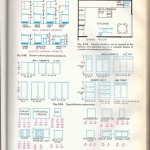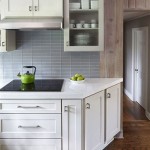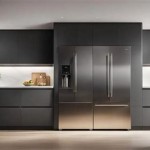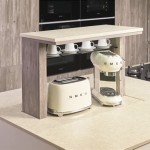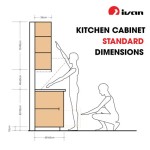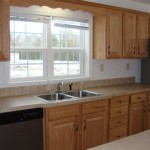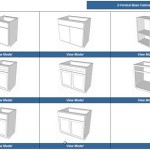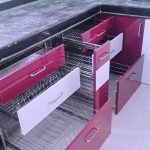Kitchen Cabinet Carcass: A Comprehensive Guide
The kitchen cabinet carcass forms the foundation of any cabinetry system. Understanding its construction, materials, and variations is crucial for homeowners and professionals alike. This article delves into the essential aspects of kitchen cabinet carcasses, offering insights into their role in kitchen design and functionality.
What is a Kitchen Cabinet Carcass?
The carcass is the basic box-like structure of a kitchen cabinet, excluding the doors, drawers, and hardware. It provides the skeletal framework that supports the cabinet's contents and determines its overall dimensions. The carcass is typically constructed from sheet materials like plywood or particleboard and includes the back panel, top, bottom, and sides.
Key Components of a Kitchen Cabinet Carcass
Several elements contribute to a well-constructed and durable cabinet carcass:
- Sides: These vertical panels form the main structural support of the carcass.
- Top and Bottom: These horizontal panels provide a surface for storing items and contribute to the carcass's stability.
- Back Panel: This panel adds rigidity to the carcass, preventing it from racking or twisting. It also protects the wall behind the cabinet.
- Shelves: Adjustable or fixed shelves offer internal storage space within the carcass.
- Toe Kick: The recessed space at the bottom of the cabinet allows for comfortable standing while working at the countertop.
Materials Used in Carcass Construction
Various materials are used in constructing cabinet carcasses, each with its advantages and disadvantages. Selecting the right material depends on budget, desired durability, and aesthetic preferences.
Common Carcass Materials
The most frequently used materials include:
- Plywood: A strong and stable engineered wood product made from layers of wood veneer. It offers good moisture resistance and screw-holding capacity.
- Particleboard: A cost-effective engineered wood product made from wood chips and resin. While less expensive than plywood, it is more susceptible to moisture damage.
- Medium-Density Fiberboard (MDF): A smooth, dense engineered wood product suitable for painted finishes. It offers a consistent surface but is less resistant to moisture compared to plywood.
- Solid Wood: While less common for carcasses, solid wood offers superior durability and a premium aesthetic. It is typically used in high-end cabinetry.
Standard Carcass Dimensions
Kitchen cabinet carcasses are available in standard sizes to accommodate typical kitchen layouts. Understanding these dimensions is vital for planning and installation.
Typical Carcass Sizes
Standard sizes are usually based on increments of 3 inches, with common widths for base cabinets ranging from 12 to 36 inches. Depths are typically 24 inches for base cabinets and 12 inches for upper cabinets. Heights vary depending on the cabinet type and application.
Frameless vs. Framed Cabinetry
Cabinet construction falls into two main categories: frameless (European-style) and framed (American-style). The carcass design differs significantly between these two styles.
Comparing Frameless and Framed Cabinets
Frameless cabinets have a simpler carcass construction without a face frame, maximizing interior storage space. Framed cabinets feature a face frame attached to the front of the carcass, adding strength and a traditional aesthetic.
Importance of Quality Carcass Construction
A well-built carcass is essential for the overall performance and longevity of kitchen cabinets. It ensures stability, supports heavy countertops and appliances, and contributes to a smooth and consistent door and drawer operation.
Factors Affecting Carcass Quality
Several factors influence the quality of a cabinet carcass:
- Material Thickness: Thicker materials generally provide greater strength and stability.
- Joinery Methods: Strong and precise joinery is crucial for a durable and long-lasting carcass.
- Fastener Quality: High-quality screws and other fasteners ensure a secure and stable assembly.
- Finishing: A proper finish protects the carcass from moisture and wear.
Choosing the Right Kitchen Cabinet Carcass
Selecting the appropriate carcass depends on several factors, including budget, desired style, and specific kitchen requirements. Careful consideration of these factors will lead to a functional and aesthetically pleasing kitchen.
Considerations for Carcass Selection
Key aspects to keep in mind when choosing a cabinet carcass:
- Kitchen Layout: Consider the available space and desired cabinet configuration.
- Storage Needs: Evaluate the required storage capacity and types of items to be stored.
- Budget: Balance desired features with available budget constraints.
- Aesthetic Preferences: Choose a carcass style and material that complements the overall kitchen design.
By understanding the essential aspects of kitchen cabinet carcasses, informed decisions can be made that contribute to a functional, durable, and aesthetically pleasing kitchen.

Kitchen Base Cabinets 101 Ana White

Kitchen Cabinets Design Materials Smith

Modular Kitchen Carcass

Simple Good Particle Board Kitchen Base Cabinet Carcass China Carcase Modern Made In Com

Carcass Only Floor Cabinet Center Mullion Ekitchens

30in Base Cabinet Carcass Frameless Rogue Engineer

Brown Modular Kitchen Cabinet Carcass For Home

Diy Kitchen Cabinets Made From Only Plywood

Kitchen Units Carcasses Made To Measure Lark Larks

Kitchen Base Cabinets 101 Ana White

